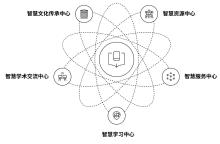
农业图书情报学报 ›› 2025, Vol. 37 ›› Issue (5): 15-26.doi: 10.13998/j.cnki.issn1002-1248.25-0379
以AI塑形智慧图书馆:基于智能体的下一代图书馆服务平台
刘炜1, 张磊2, 嵇婷2, 陈晓扬3
- 1.上海社会科学院信息研究所,上海 200030
2.上海图书馆(上海科学技术情报研究所),上海 200031
3.上海福呈数据科技有限公司,上海 200433
Shaping the Smart Libraries with AI: An Agent-based, Next-Generation Library Service Platform
LIU Wei1, ZHANG Lei2, JI Ting2, CHEN Xiaoyang3
- 1.Information Research Institue, Shanghai Academy of Social Sciences, Shanghai 200030
2.Shanghai Library (Institute of Scientific and Technical Information of Shanghai), Shanghai 200031
3.Shanghai Fortune Data Technology Co. , Ltd. , Shanghai 200433
摘要:
【目的/意义】 云计算时代提出的图书馆服务平台(LSP)未能实现其成为图书馆统一解决方案的承诺,在智慧图书馆时代又面临新的发展瓶颈。其相对刚性的架构、孤岛化的数据模型和有限的智能水平,难以满足现代用户对新型资源生态的获取,及主动式服务的迫切需求。本文旨在提出一种基于大语言模型(LLM)智能体(Agent)的下一代LSP架构A-LSP,以解决现有LSP的局限性,并推动图书馆服务平台向人工智能时代转型。 【方法/过程】 该架构引入了一个新的3层概念模型,包括实现标准化工具集成的MCP市场、负责编排调度的智能体中间件,以及支持功能扩展的智能体应用生态层。同时,文章面向未来图书馆提出了“五大中心”的建设需求框架,即智慧资源中心、智慧服务中心、智慧学习中心、智慧学术交流中心与智慧文化传承中心,以构建图书馆技术与业务融合的蓝图。 【结果/结论】 研究提出的A-LSP架构通过基于模型上下文协议(MCP)的API封装,确保了对现有系统的后向兼容性,能够在不替换原有系统的基础上实施新的平台战略。这一基于智能体的图书馆服务平台可以看成是现有LSP的重要升级,将驱动其从以资源管理为中心转向以智能体服务为中心,成为人工智能时代的图书馆服务平台。
中图分类号: G250.7
刘炜, 张磊, 嵇婷, 陈晓扬. 以AI塑形智慧图书馆:基于智能体的下一代图书馆服务平台[J]. 农业图书情报学报, 2025, 37(5): 15-26.
LIU Wei, ZHANG Lei, JI Ting, CHEN Xiaoyang. Shaping the Smart Libraries with AI: An Agent-based, Next-Generation Library Service Platform[J]. Journal of library and information science in agriculture, 2025, 37(5): 15-26.







